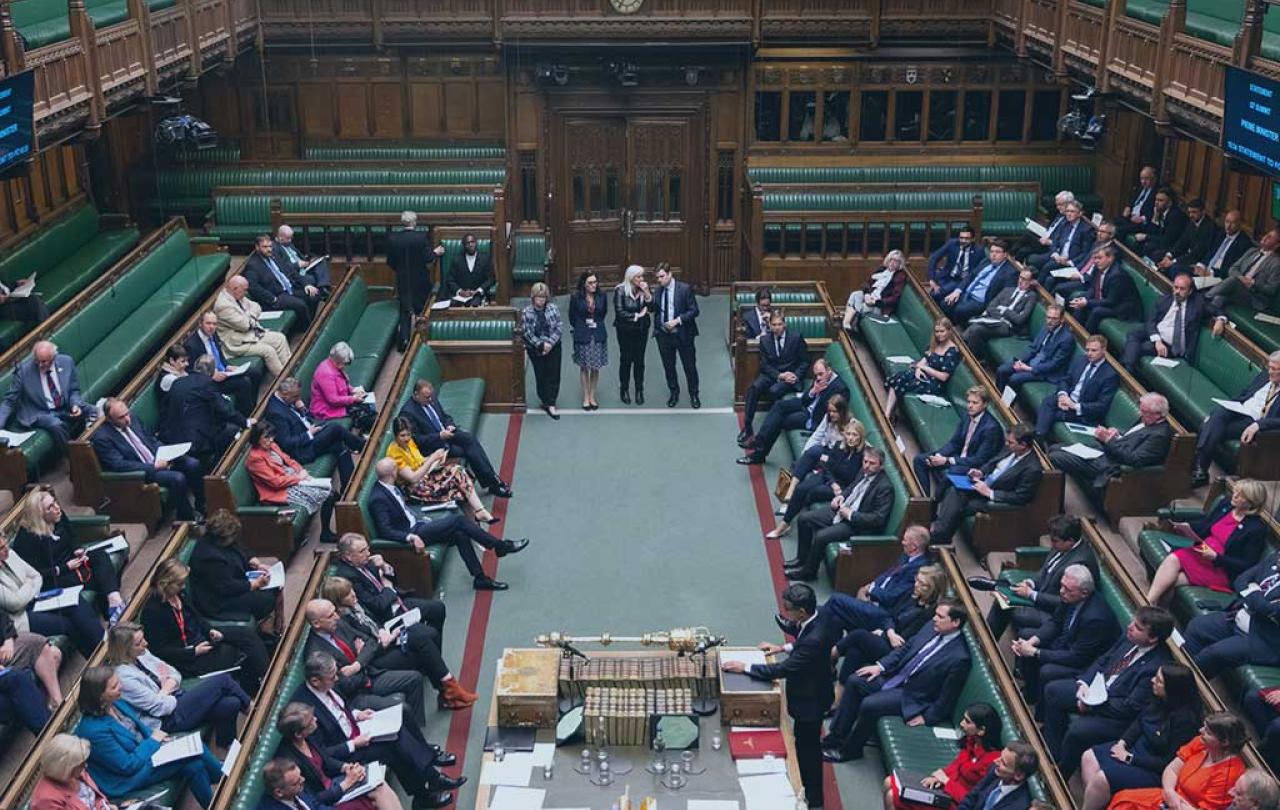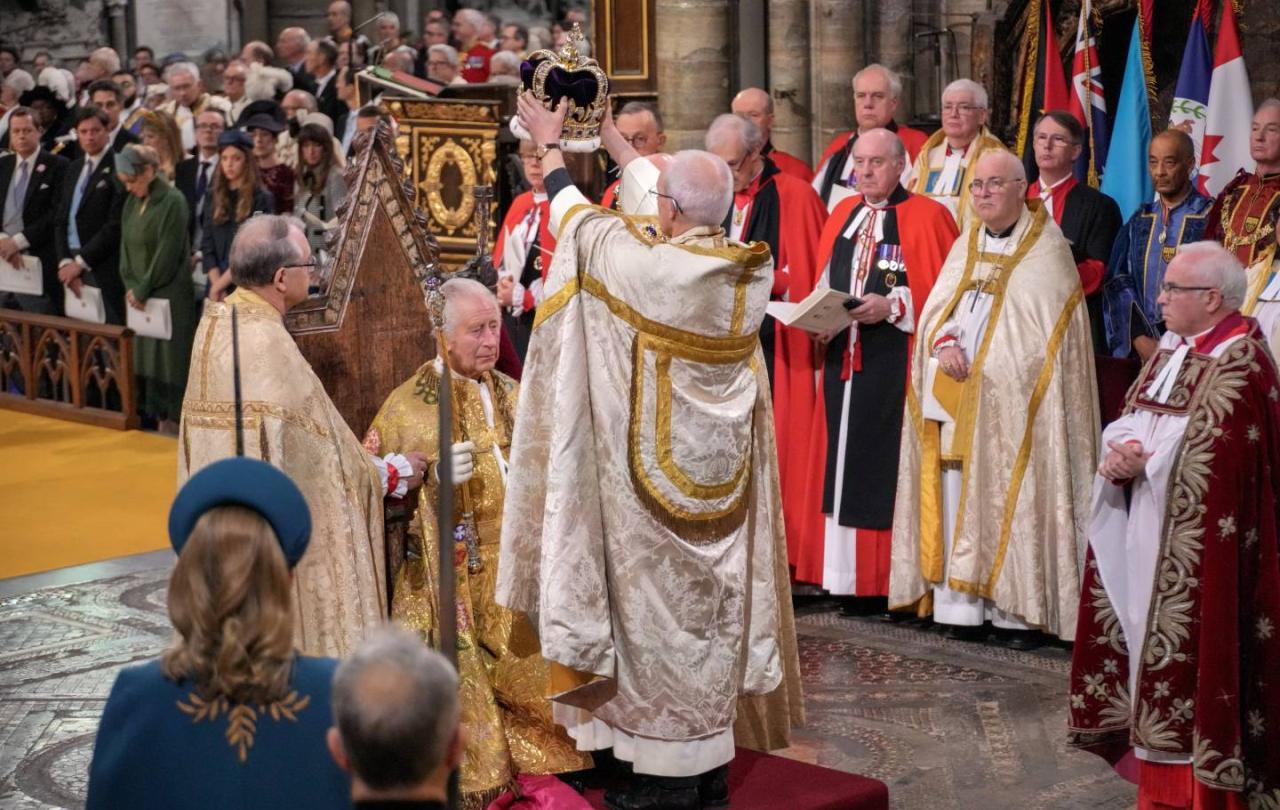
The New Statesman recently released their ‘left power list’ – “the 50 most influential people shaping Britain’s progressive politics.” As I read it through, one name caught my eye – Justin Welby. He comes in a comfortable mid-table position at no. 27, behind Gary Lineker and JK Rowling, and ahead of Gordon Brown and Marcus Rashford.
The Archbishop of Canterbury may perhaps be a strange addition to a list of left-leaning figures. Not all his predecessors have been so - his predecessor but two, George Carey, is often seen espousing views from the right. It is not accidental that the present Archbishop has served in times of a Conservative government, while George Carey held the role during the latter years of New Labour. It is perhaps the job of Archbishops to hold the government of the day to account, so perhaps not surprising that Welby is seen as a critic of the Conservatives. If the government of his time had been Labour, perhaps he would be seen very differently.
However, what got me thinking was not so much the identification of the Archbishop as left-leaning but the co-option of the Church’s voice into the wider narrative of the left-right political spectrum. The language of ‘left’ and ‘right’ dates back to the French Revolution, where, in the National Assembly, the supporters of the king sat to the right of the President, and the revolutionaries sat to his left. Subsequent governmental institutions in France continued the seating arrangements and the language became embedded in political discourse far beyond France. Since then the ‘left’ has always been associated with ideas such as freedom, progress, equality and reform. The ‘right’ has valued older institutions of social life such as family, locality, individual responsibility, duty, tradition and so on.
Left and Right... shoe-horns religion into the procrustean bed of a political ideology that cannot do justice to its true nature.
Left and Right is a structure of political life with which we are very familiar. But when it comes to co-opting religious perspectives, it misses so much of what makes them interesting. It has no place for God, for revelation, for prayer, the mystical and the miraculous, the hosts of angels, the language of virtue or the surprising delight of grace. It shoe-horns religion into the procrustean bed of a political ideology that cannot do justice to its true nature. It emasculates it of all that makes it interesting and distinct.
This attempt to domesticate religion has a long pedigree. The Christian Church was born into a world dominated politically by the Roman empire, and religiously by paganism. This new claim that the God behind all things had revealed himself in the person of Jesus Christ was definitely awkward, but by and large, pagans were happy to fit it into their view of the world, if only the Christians were happy to regard Jesus as yet one more god alongside the other gods – a private option for those who preferred that kind of god, as opposed to Jupiter, Mercury or Aphrodite. The early Christians however refused to comply. They insisted Jesus was God, not just a god. They resisted their founder being co-opted into the pagan pantheon, or even the Roman imperial regime, refusing by and large to serve in the army if that meant killing their enemies in defiance of Jesus’ command to love them, or offering worship to the gods in civic festivals, even when their contemporaries could not understand the refusal to join in what to them was some harmless ritual to keep the gods happy.
Even more, early Christian thinkers such as Athanasius argued that the coming of Christ into the world was too seismic an intervention to be simply co-opted into existing paradigms. In particular, the Resurrection of Christ was either a gigantic hoax, or an invitation to re-think reality all over again from a new starting point - that humanity’s greatest enemy - death itself – had been defeated once and for all. As the theologian Lesslie Newbigin put it:
“At the heart of the Christian message was a new fact. God had acted in a way that, if believed, must henceforth determine all our ways of thinking. It could not merely fit into existing ways of understanding the world without fundamentally changing them. According to Athanasius, it provided a new arche, a new starting point for all human understanding of the world. It could not form part of any worldview expect one of which it was the basis.”
Thus, Christianity was bound to transcend the political structures of its time - or any time for that matter. A bold Christianity, true to itself, could not just be co-opted within an alien political or social structure – it was always going to be an awkward bedfellow with the empire.
In more recent years, a number of theologians have made the same point. Philosopher and theologian John Milbank wrote a ground-breaking book in the 1990s, Christianity and Social Theory, where he criticised the whole venture of the Sociology of Religion as domesticating Christian faith into an alien structure of thought, where society was taken as a given, and religious faith explained away by secular theoretical categories. Sociology for him was its own non-neutral theology, a rival discourse to Christianity, ‘a secular policing of the sublime’, domesticating it and reducing it to fit with the narrow categories of sociological theory.
Christianity just refuses to fit into foreign categories that try to tame it
More recently, James Mumford, in his short book Vexed, written with half an eye to the American experience, shows how again Christianity just refuses to fit into foreign categories that try to tame it, and how it consistently blows apart the moral and political packages that both left and right offer us in modern life. So, for example, the deeply Christian notion of the sanctity of life – that human life is sacred, to be respected in all its forms, and cannot be taken away by another human being - leads both to an abhorrence of unwarranted abortion (the American right cheers at this point), yet also to a restriction of the right to carry guns that take life (not so popular among the Republican base.) Conservatives prize family values, yet are happy to allow economic competition to permit zero-hours contracts that make desperate parents vulnerable to shifts in the market that mean they cannot feed their children. Christians might agree with the first, but disagree with the second. Similarly, the left prizes inclusivity, yet at the same time, promotes assisted dying, baulking at extending this inclusivity to the elderly person who would have to make an active choice to go on living, when pressure may mount to leave their money to their offspring and vacate the scene early. Again, the left champions the sexual revolution yet, despite its suspicion of economic liberalism, holds back from a critique of the consumerism of much sexual culture, that values being able to move onto new sexual partners as desire dictates.
So, Mumford argues, Christians may find themselves adopting a strange mix of beliefs and opinions – or perhaps only strange when seen from the perspective of a secular mindset – opposed to unwarranted abortion, yet in favour of gun control; in favour of family life, yet wanting economic intervention to the labour market to ensure proper pay for workers.
The point here is not so much to argue that Christians have a unique political viewpoint that is distinct from left or right, but that Christianity is more than politics. Beneath the surface of Christian political convictions, such as those that come from the Archbishop, lie (or should lie) a whole host of deeper commitments – to God, to the insights that come in prayer, to the most vulnerable in society, to a sense of a deep order and structure to the world that cannot be toyed with by progressive political fantasies, to the reality of Resurrection. None of these quite fit the simple left-right equation. The bishops may or may not be right in their political pronouncements – and there is room for debate on that, but trying to make them fit into the narrow categories of mere politics just doesn’t work. God is too big for that.





